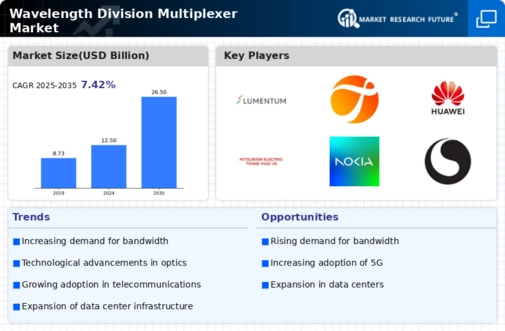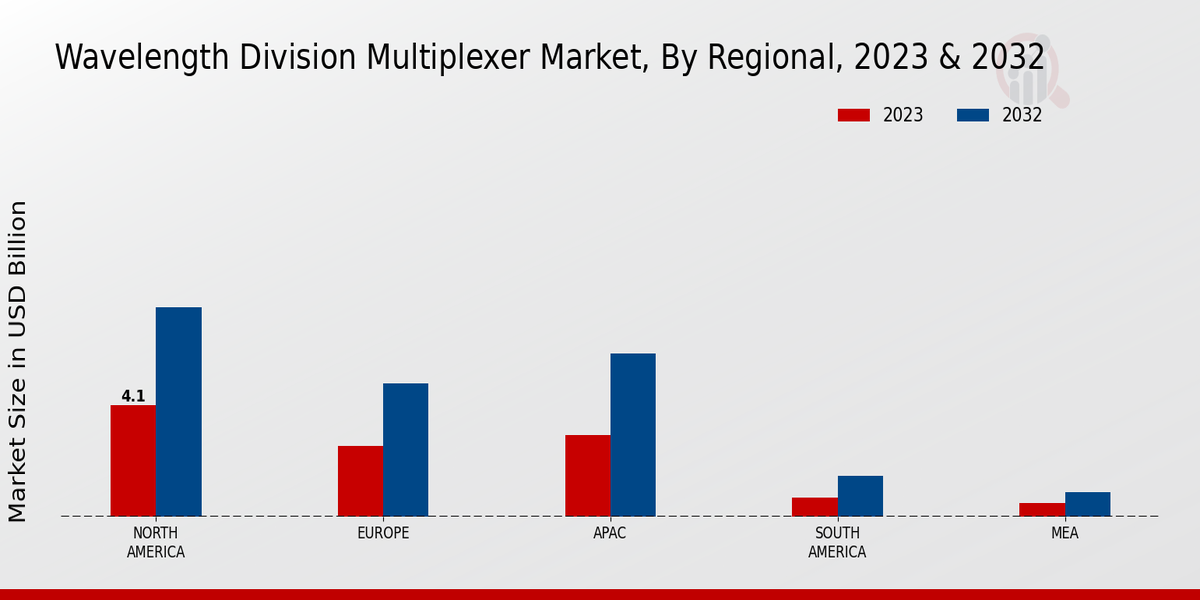The Wavelength Division Multiplexer Market is characterized by a dynamic competitive landscape where various key players continuously strive to enhance their market share and technological capabilities.
This market, driven by the increasing demand for high-bandwidth communication networks and the growth of data centers, has attracted significant attention from leading telecom and optical component manufacturers.
Companies operating within this space are focusing on innovation, strategic partnerships, mergers, and acquisitions to strengthen their offerings and differentiate themselves from competitors.
As telecom operators expand their networks and service providers seek to optimize bandwidth, the competition intensifies, leading to advancements in Wavelength Division Multiplexer technologies and increased investment in research and development.
Lumentum, a prominent entity in the Wavelength Division Multiplexer Market, boasts a comprehensive portfolio of optical networking solutions that cater to the evolving demands of the telecommunications sector.
The company excels in the development of advanced photonic products, leveraging its expertise in optical engineering to deliver high-performance multiplexers that ensure efficient data transmission.
With a strong emphasis on quality and reliability, Lumentum's components are recognized for their superior performance in high-capacity networks, supporting various applications across long-haul, metro, and data center deployments.
Furthermore, Lumentum's commitment to innovation allows the company to remain at the forefront of technological advancements, thereby solidifying its position as a trusted partner for network operators and service providers looking to enhance their infrastructure.
Optical Communication Products is another key player in the Wavelength Division Multiplexer Market, renowned for its specialized offerings tailored for optical networking applications. The company positions itself as a provider of high-quality Wavelength Division Multiplexers that cater to the diverse needs of the telecommunications industry.
With a focus on delivering cost-effective and reliable solutions, Optical Communication Products has carved out a niche that emphasizes customer satisfaction and responsive service. The firm is known for its ability to deliver customizable product lines that meet specific requirements, ensuring seamless integration into existing network architecture.
Through a combination of robust engineering capabilities and a customer-centric approach, Optical Communication Products aims to enhance connectivity options for clients while remaining competitive within the ever-evolving landscape of optical communication technologies.




















Leave a Comment